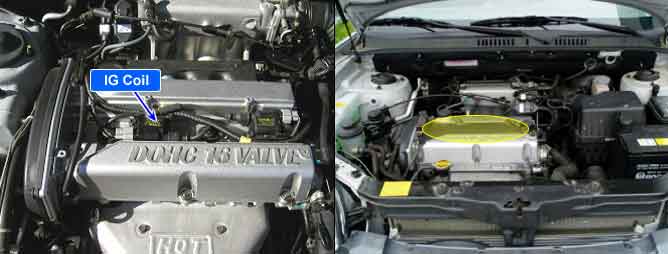

Misfires can be caused by lack of combustion in a cylinder due to absence of spark, poor fuel metering, poor compression, or many other causes. Even a small number of misfires may result in excessive exhaust emissions due to the unburned mixture. Increased misfire rates cause damage to the catalytic converter. The PCM monitors the crankshaft speed variation to determine if any misfiring generated. The PCM identifies the specific cylinder in which the misfire has occurred and counts individual misfire events by monitoring changes in the crankshaft rotation for each cylinder. A random misfire indicates two or more cylinders are misfiring.
If misfire occurs in cylinder #3, the PCM determines that a fault exists and a DTC is stored.
Item | Detecting Condition | Possible cause |
DTC Strategy | ● Fluctuation of crank angular acceleration is monitored | ● Poor connection ● Faulty Spark plugs ● Faulty Spark plug cables ● Belt deflection and Air gap of CKPS ● Faulty injector ● Improper fuel pressure ● Improper engine compression ● Faulty PCM |
Enable Conditions | ● Engine speed=500~3500rpm ● Engine load:Tb <535mmHg ● Fuel cut=off ● No sudden acceleration ● No sudden deceleration ● No shift change | |
Threshold value | ● Misfire ratio within 1000revs > 3.0% ● Misfire ratio within 200revs > 10 ~ 25% (Catalyst temp.>950℃) | |
Diagnosis Time | ● 200revs.Continuous |
Engine RPM at idle | 750 ± 100rpm |
Ignition Timing | BTDC 7° ± 5° |